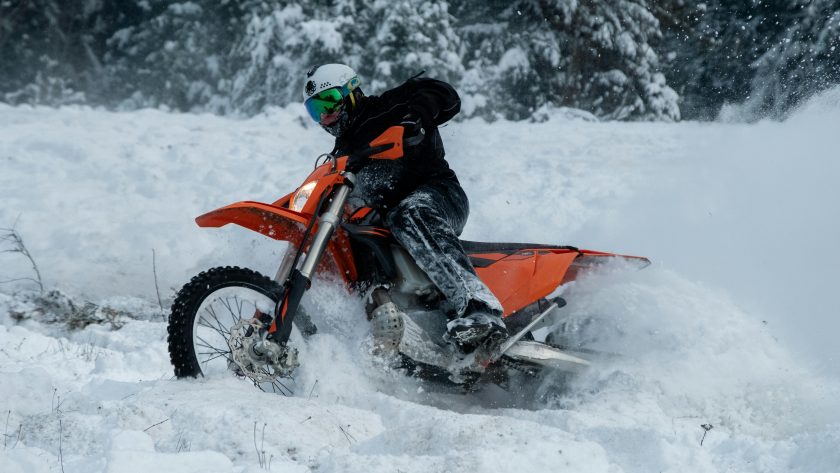Motorcycle riders know all about the hazards of winter.
From decreased visibility to slippery road surfaces, every ride comes with inherent risks to your safety. Whether you’re an experienced rider or you’ve only just started hitting the road on two wheels, it’s worth knowing how to keep yourself safe when the conditions through a few unexpected curveballs.
- Quality winter tyres
Having the right set of tyres can make all the difference when it comes to staying safe on the roads in winter. Whether you typically ride on country lanes or busy city routes, you can only ride in confidence with total grip for cornering.
Plus, being able to come to a controlled stop is especially important for motorcyclists, who are deemed as vulnerable road users. Head down to your nearest tyre dealer and discuss the best options for you and your bike. You’ll typically pay more for quality tyres, so try not to compromise on your safety.
- High-visibility clothing
The UK is known for its low daylight hours in winter, with very late sunrises and early sunsets. If you’re commuting on your bike, you could already be riding in total darkness both ways.
This underlines the importance of high-visibility or reflective outer layers to make sure that you can be spotted by other drivers. Unfortunately, 350 motorcyclists were killed on the roads in 2022 alone.
Keeping yourself visible is one of the most effective ways to reduce the risk. Even speeds as low as 30 miles an hour can cause life-changing injuries. Recovery from severe accidents is difficult and may warrant the need to contact amputations claims specialists. It’s always important to put your safety first. Make sure you know the details of any personal injury solicitors covering England & Wales.
- Regular servicing
Looking after your bike means you can ride in confidence as the seasons change. Whether you’re riding for five minutes or two hours, there’s no need to risk your safety by riding a bike that’s not mechanically sound.
Before you set off on a long journey, or routinely every couple of weeks, check your engine oil and coolant levels. It could be worth testing your brakes on a short ride around your neighbourhood too. It’s easier and safer to get any issues addressed before you head out on a longer trip, especially in winter.
- Carry an emergency kit
It’s important to be prepared for anything. If your bike has a storage compartment or if you carry a rucksack, try to include a small first aid kit or a light collection of supplies to use in an emergency. This could include:
- Bottles of water
- Bright headtorch
- Compact jacket
- Pair of gloves
- Hi-vis outer layers
Breaking down on the side of the road is never easy, but it’s even more challenging when you need to stay warm and safe too. In winter, make sure you can always keep yourself comfortable and visible should you need to spend any time away from your bike.
Ready to ride through the winter? With the right setup, preparation and supplies, you’ll be on your way to another successful season on your bike.

